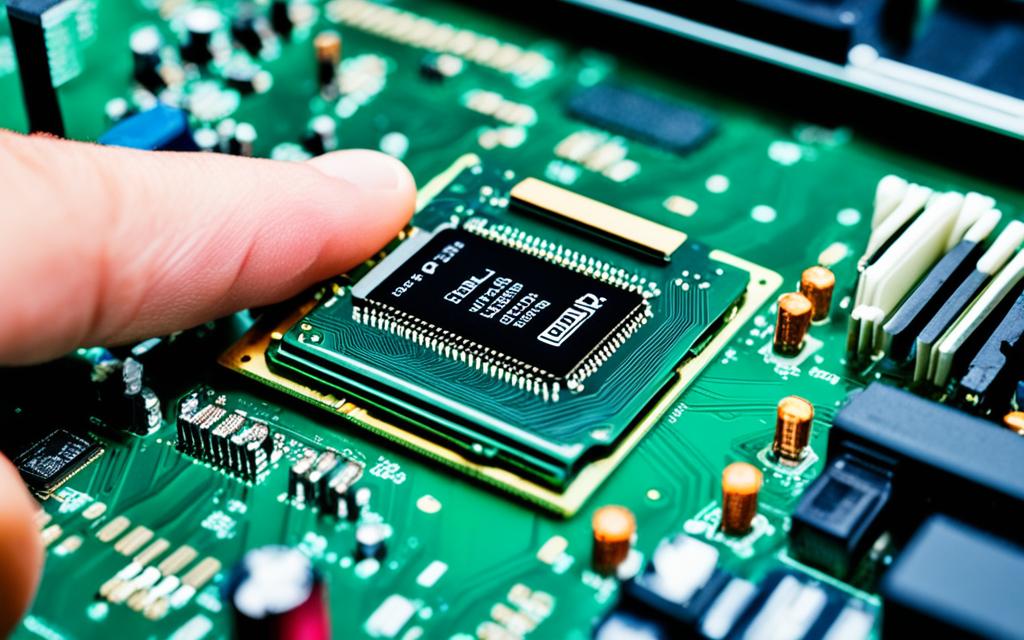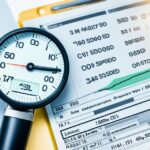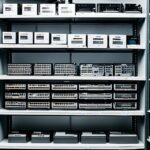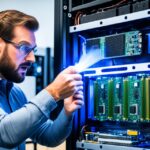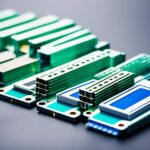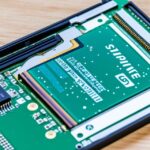Table of Contents
Turning on an SSD in the BIOS boosts your system’s speed and helps it find the SSD. The BIOS acts as a bridge between your computer’s brain and its parts, like storage devices. To let your system and the SSD talk well, setting up the BIOS right is key. This article will show you how the BIOS works, fixing common SSD issues, and steps to turn on SSD in BIOS. By doing this, you can make your computer work better1.
Key Takeaways
- Understanding BIOS is crucial for effective hardware communication.
- Configuring BIOS settings can resolve SSD detection issues.
- Outdated firmware and damaged connections hinder SSD functionality.
- Ensuring compatibility with motherboard slots is essential.
- M.2 SSDs require specific BIOS configurations to operate efficiently.
- Hoisting the CSM option can resolve detection problems on certain motherboards.
Understanding BIOS and SSD Functionality
The BIOS, or Basic Input/Output System, is key for computers to work well. It’s computer firmware found on the motherboard. It starts hardware components during the boot process. Besides starting up, the BIOS manages hardware too. Users can set things like boot order and turn components on or off. This firmware makes sure all parts of the computer talk to each other well, making the computer reliable.
What is BIOS?
The BIOS connects the computer’s hardware with its operating system. Without the BIOS, the computer wouldn’t know how to use important parts like the SSD. It decides how different parts of the computer work together. This affects how fast the computer starts and performs. In the BIOS menu, users can change settings. These changes can greatly improve how well and fast the computer works.
How SSDs Enhance System Performance
Looking at SSD advantages shows why they’re better than old hard drives. Solid State Drives (SSDs) use new storage technology to be really fast. They let computers start quicker, move files faster, and open apps swiftly. SSDs also use less power. About 92% of people fix SSD problems by looking at the hardware or doing upkeep. This shows that setting up and looking after your SSD well is important2.
Common Reasons for SSD Not Detected in BIOS
Finding your SSD not showing up in BIOS is quite annoying. A few reasons lead to SSD connection issues. These mainly involve how well it’s connected and if it suits the motherboard. Figuring out these reasons helps fix the problem quicker.
Loose or Damaged Connections
Loose or broken connections are often why an SSD isn’t seen. SATA cables or NVMe connections might not be properly in place. This can happen after moving your computer. If a power cable is faulty or connectors are damaged, the SSD won’t get enough power. It’s key to check all connections to make sure they’re good.
Fixing these hardware faults improves how the SSD talks to the motherboard.
Compatibility Issues with Motherboards
Sometimes, the SSD and motherboard don’t work well together. Older motherboards may not support newer SSDs like M.2 or NVMe. This makes the BIOS fail to recognize the drive. It’s crucial to check if your motherboard can handle your SSD. Look at the manufacturer’s guide for hardware specifications.
Also, updating your BIOS could solve some issues. Making sure everything matches up means your SSD will work as expected.
To fix SSD detection issues, you could look into BIOS settings. Check if the SATA port is on. Using tools made for SSD problems might also help. Doing regular checks can prevent issues linked to hardware faults. A good look at connections and motherboard support is vital, especially with complex SSD types.
Learn more about BIOS SSDdetection3.Explore upgrading options for betterstorage4.
How to Enable SSD in BIOS
To enable your SSD, start by learning how to enter BIOS. You can do this by pressing a certain key as soon as you turn on your computer. The key you need to press is different for each brand. So, look at your motherboard’s manual for the exact steps. Once you’re in BIOS, you’ll see a menu where you can change settings for your storage devices.
Accessing the BIOS Settings
Once in BIOS, head to the storage settings area. This might be labeled “Storage Configuration” or “SATA Configuration.” Here, look for options about your SSD. It might be off or on based on what you chose before. Make sure you find and select your SSD in the BIOS settings.
Getting the settings right is key for setting up your SSD. Look for the boot menu to adjust which device boots first. Make your SSD the primary boot device. This makes sure your PC starts using the SSD. If you make changes, say yes to save them before you leave BIOS. Always restart your PC to make sure BIOS sees your SSD right, for a smooth running system. This only takes a few minutes. While some people prefer doing it themselves, using automatic tools can make it easier.
Using something like EaseUS Partition proven useful for moving to your new SSD. This helps with any worries about how well the SSD works after it’s all set up. Being careful with these steps is crucial to making your SSD work well, boosting your PC’s speed and reliability.
| Steps to Enable SSD in BIOS | Estimated Time |
|---|---|
| Preparing SSD | 3-5 minutes |
| Migrating Windows OS to SSD | 10-30 minutes |
| Making SSD the Boot Drive | 3-5 minutes |
| Restarting PC and Entering BIOS | 1-2 minutes |
| Enabling SSD and Saving Changes | 2-3 minutes |
With care and the right steps, enabling SSD in BIOS can majorly boost your PC’s speed5..
Troubleshooting SSD Issues in BIOS
When your SSD isn’t recognized in BIOS, start by checking hardware connections. Make sure all physical connections are checked. This includes making certain SATA or NVMe cables are tightly connected at both ends. Also, check the power connections to ensure the SSD gets enough power. If you still have issues, try disconnecting and then reconnecting the SSD. Often, reconnecting can fix many hidden problems. This approach will likely help your system detect the SSD properly.
Checking Hardware Connections
If your SSD still isn’t found, you might need to update its firmware or drivers. Updating SSD firmware is important. It makes sure your SSD works well with new tech and fixes bugs that could prevent detection. Also, update your motherboard drivers to avoid conflicts and boost system performance. Sometimes, setting CPU or Memory overclocking back to defaults can help. Overclocking can cause instability, leading to detection issues.
Updating Drivers and Firmware
If you’ve tried everything and it’s still not working, look for hardware errors. Try different SATA ports and use shorter SATA cables; keep them under 39.37 inches (1 meter). If none of this works, your SSD may be damaged and might need replacing. These steps are thorough and help ensure that your computer works reliably and efficiently627.
FAQ
How do I enable my SSD in BIOS?
To enable your SSD in BIOS, start your computer and press the key (like F2, Del, or Esc) immediately to enter BIOS settings. Within the BIOS, go to storage settings and make sure your SSD is turned on. You might also have to change the boot sequence to have the SSD boot first.
Why is my SSD not being detected in BIOS?
Several reasons can cause your SSD to go undetected in BIOS. Issues may arise from loose or broken connections, your motherboard not supporting the SSD, or firmware being out of date. Always check connections and confirm if your motherboard can support the type of SSD you are using.
What should I do if my SSD is not showing up in the BIOS settings?
If your SSD isn’t visible in BIOS settings, ensure cables are properly connected. After checking connections, look out for compatibility problems. You might also need to update the motherboard’s drivers and SSD’s firmware to ensure they work well together.
How can I troubleshoot an SSD detection issue?
Start by inspecting the hardware connections for your SSD, including SATA or NVMe cables and power connectors. If everything’s in place, consider updating their drivers and firmware. Updating your system with the latest software versions can sometimes fix the detection issues.
Does enabling my SSD in BIOS improve system performance?
Indeed, turning on your SSD in BIOS enhances system performance significantly. When BIOS is set up correctly, it ensures effective communication between the operating system and the SSD. This makes the most of the SSD’s speed, which is a big improvement over HDDs.
What is the role of BIOS in my computer’s hardware management?
The BIOS, standing for Basic Input/Output System, is a crucial piece of firmware on the motherboard. It checks and starts hardware components when you turn on your computer, oversees system configurations, and helps the operating system talk to the hardware, including SSDs.
Source Links
- https://www.partitionwizard.com/partitionmanager/ssd-not-showing-up-in-bios.html – 4 Ways to Fix SSD Not Showing Up in BIOS – MiniTool Partition Wizard
- https://www.easeus.com/computer-instruction/ssd-not-detected-in-bios.html – SSD Not Detected in BIOS | Top 8 Ways to Fix🔥
- https://www.techchef.in/data-recovery-tips-for-undetected-ssd-on-bios/ – Data Recovery Tips for Undetected SSD on BIOS – Techchef Group
- https://www.makeuseof.com/6-ways-to-fix-the-ssd-not-recognized-error-in-windows-10/ – 6 Ways to Fix the “SSD Not Recognized” Error in Windows 10
- https://www.easeus.com/partition-master/set-ssd-as-boot-drive.html – How to Set SSD as Boot Drive [2024 Updated]
- https://www.asus.com/support/faq/1044083/ – [Motherboard] Troubleshooting – Cannot find the hard disk drive or SSD(M.2) after motherboard powers on | Official Support | ASUS Global
- https://www.seagate.com/support/kb/the-bios-does-not-detect-or-recognize-the-solid-state-drive-005707en/ – The BIOS does not detect or recognize the Solid State Drive | Support Seagate US

